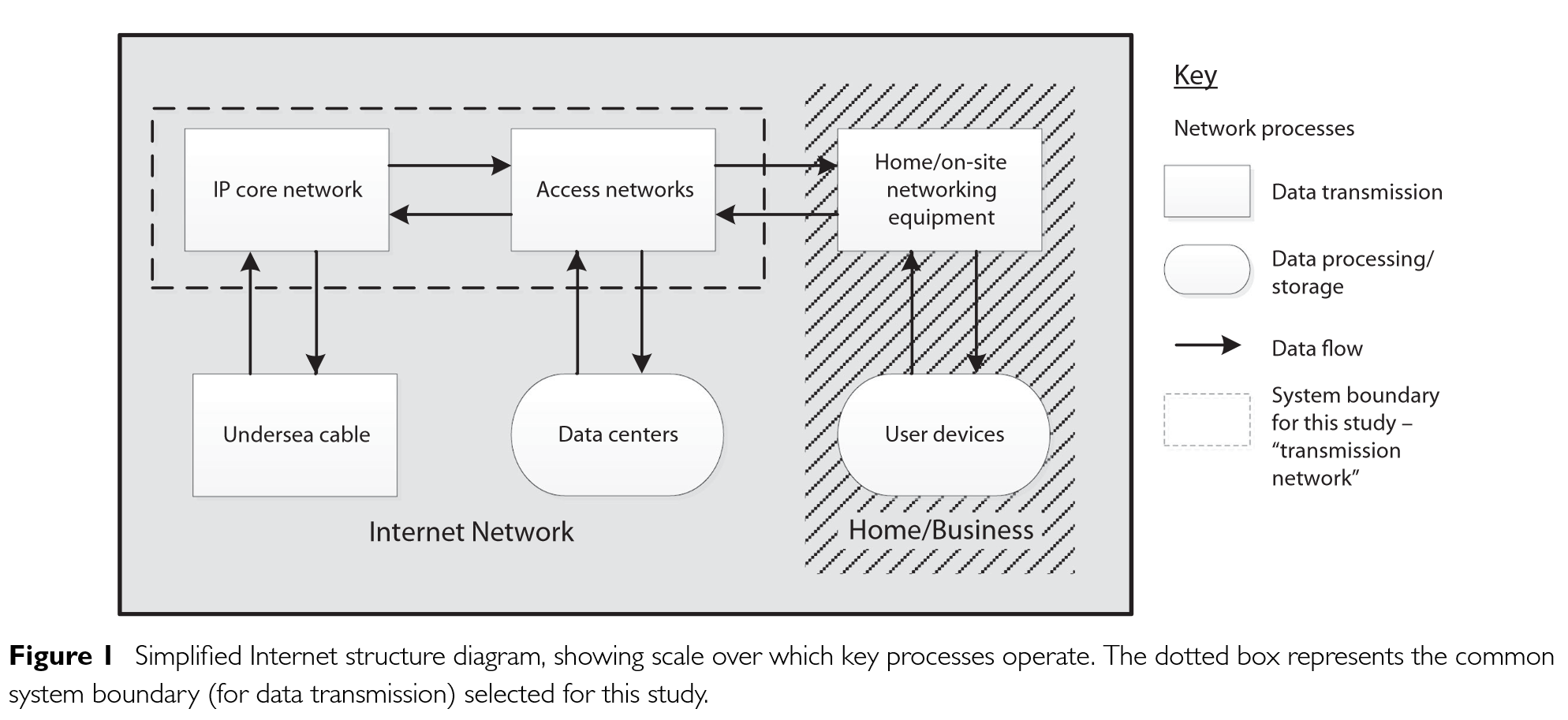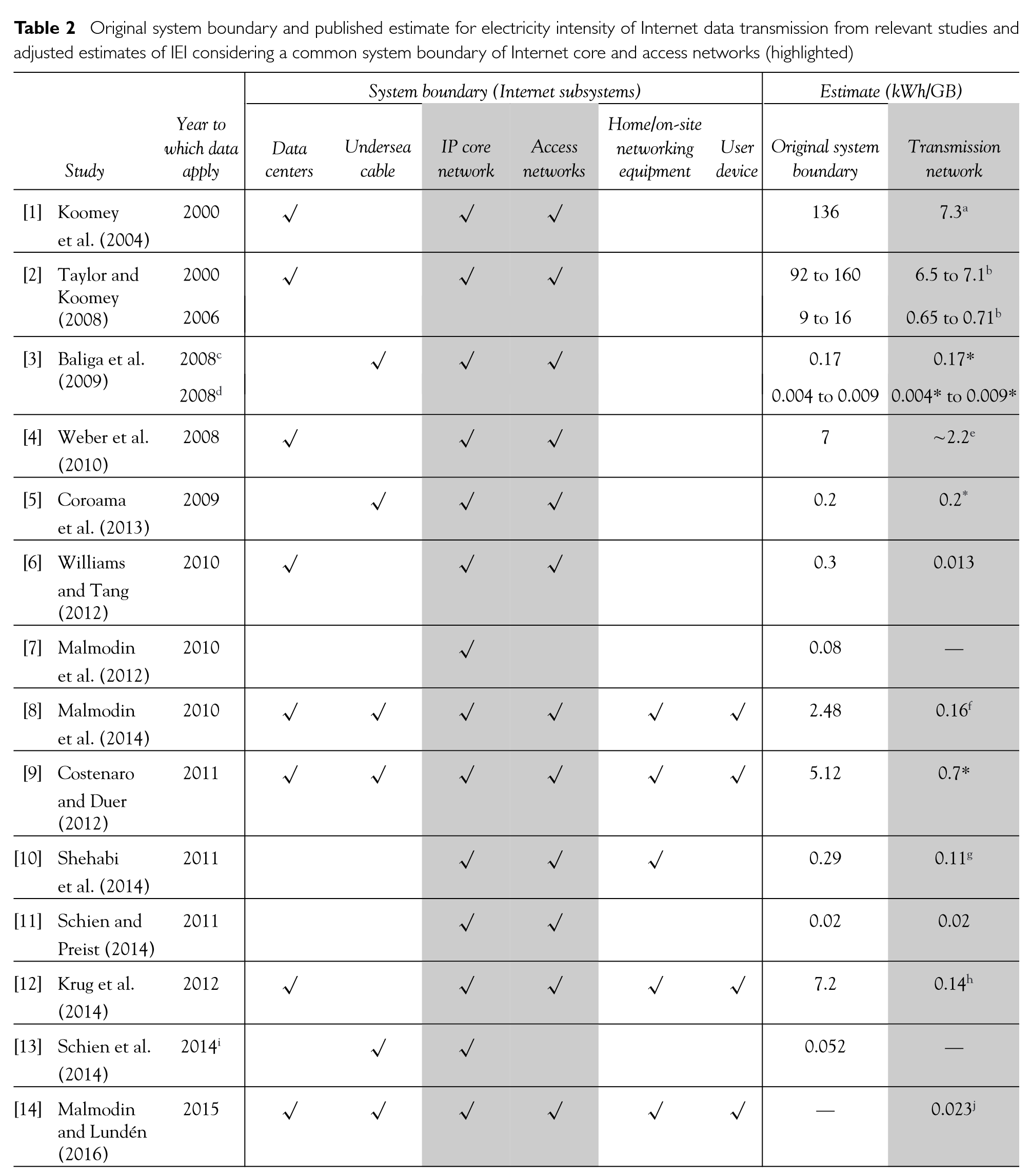Electricity Intensity of Internet Data Transmission: Untangling the Estimates
Status:: 🟩
Links:: Energy consumption of network communication
Metadata
Authors:: Aslan, Joshua; Mayers, Kieren; Koomey, Jonathan G.; France, Chris
Title:: Electricity Intensity of Internet Data Transmission: Untangling the Estimates
Publication Title:: "Journal of Industrial Ecology"
Date:: 2018
URL:: https://onlinelibrary.wiley.com/doi/abs/10.1111/jiec.12630
DOI:: 10.1111/jiec.12630
Bibliography
Aslan, J., Mayers, K., Koomey, J. G., & France, C. (2018). Electricity Intensity of Internet Data Transmission: Untangling the Estimates. Journal of Industrial Ecology, 22(4), 785–798. https://doi.org/10.1111/jiec.12630
Zotero
Type:: #zotero/journalArticle
Keywords:: [🔥, ⏳]
Relations
Abstract
In order to understand the electricity use of Internet services, it is important to have accurate estimates for the average electricity intensity of transmitting data through the Internet (measured as kilowatt-hours per gigabyte [kWh/GB]). This study identifies representative estimates for the average electricity intensity of fixed-line Internet transmission networks over time and suggests criteria for making accurate estimates in the future. Differences in system boundary, assumptions used, and year to which the data apply significantly affect such estimates. Surprisingly, methodology used is not a major source of error, as has been suggested in the past. This article derives criteria to identify accurate estimates over time and provides a new estimate of 0.06 kWh/GB for 2015. By retroactively applying our criteria to existing studies, we were able to determine that the electricity intensity of data transmission (core and fixed-line access networks) has decreased by half approximately every 2 years since 2000 (for developed countries), a rate of change comparable to that found in the efficiency of computing more generally.
Notes & Annotations
📑 Annotations (imported on 2023-06-23#14:42:50)
Existing estimates for the electricity intensity of Internet data transmission, for 2000 to 2015, vary up to 5 orders of magnitude, ranging from between 136 kilowatt-hours (kWh)/GB in 2000 (Koomey et al. 2004) and 0.004 kWh/GB in 2008 (Baliga et al. 2009).
So-called top-down approaches have been criticized for overestimating electricity intensity, whereas bottom-up approaches have been considered to underestimate electricity intensity (Schien and Preist 2014).

Transmission network = IP core network (e.g. core/metro/edge switches and routers) + access network (e.g. DSLAM)
Not included: undersea cables, data centers, home/on-site network equipment, user devices
IP core network Internet Service Provider (ISP) equipment which form regional, national, and global networks. This typically includes equipment that uses Internet Protocol (IP), the principle communications protocol which allows for the routing and relaying of data across networks.
Access network Equipment connecting subscribers (or users) to ISPs, differing from the core network, which connects servers to different ISPs.

Updating Krug and colleagues’ (2014) 2012 estimate using these assumptions gives a value for the electricity intensity of data transmission of 0.06 kWh/GB for 2015 (based on BT network in the UK).
Contrary to previous studies, our analysis did not find the methods used to be a substantial cause of variation between estimates; rather, the treatment of time, methodological errors, and boundary choices appear to be the major sources of uncertainty.
Estimates for average transmission network electricity intensity that meet these criteria show a halving of intensity every 2 years.